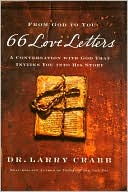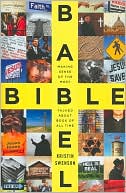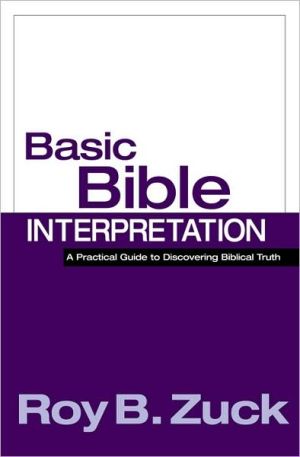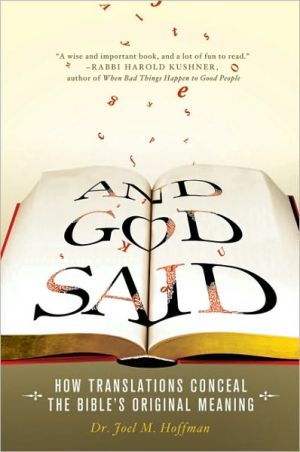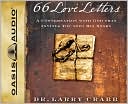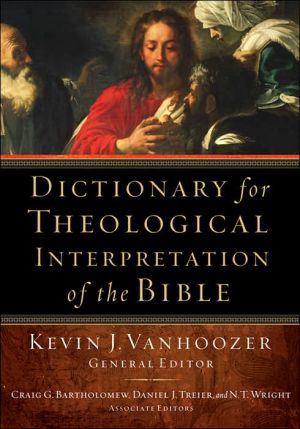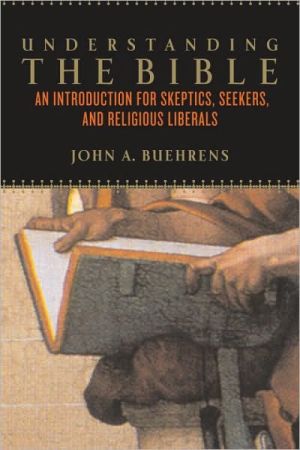How to Read the Bible for All Its Worth
Your Guide to Understanding the Bible\ Understanding the Bible isn't for the few, the gifted, the scholarly. The Bible is accessible. It's meant to be read and comprehended by everyone from armchair readers to seminary students. A few essential insights into the Bible can clear up a lot of misconceptions and help you grasp the meaning of Scripture and its application to your 21st-century life.\ More than half a million people have turned to How to Read the Bible for All Its Worth to inform...
Search in google:
Biblical interpretation for both beginning and experienced Bible readers. Changes to the new third edition include: updated language, new foreword, improved diagrams, substantial rewriting of several chapters to make them more user-friendly, and updated list of recommended commentaries and resources.
Chapter 1\ Introduction: The Need to Interpret\ Every so often we meet someone who says with great feeling, "You don't have to interpret the Bible; just read it and do what it says." Usually, such a remark reflects the layperson's protest against the "professional" scholar, pastor, teacher, or Sunday school teacher, who, by "interpreting," seems to be taking the Bible away from the common man or woman. It is their way of saying that the Bible is not an obscure book. "After all," it is argued, "any person with half a brain can read it and understand it. The problem with too many preachers and teachers is that they dig around so much they tend to muddy the waters. What was clear to us when we read it isn't so clear anymore."\ There is a lot of truth in that protest. We agree that Christians should learn to read, believe, and obey the Bible. And we especially agree that the Bible should not be an obscure book if studied and read properly. In fact we are convinced that the single most serious problem people have with the Bible is not with a lack of understanding, but with the fact that they understand most things too well! The problem with such a text as "Do everything without complaining or arguing" (Phil. 2: 14), for example, is not with understanding it, but with obeying it--putting it into practice.\ We are also agreed that the preacher or teacher is all too often prone to dig first and look later, and thereby to cover up the plain meaning of the text, which often lies on the surface. Let it be said at the outset--and repeated throughout, that the aim of good interpretation is not uniqueness; one is not trying to discover what no one else has ever seen before.\ Interpretation that aims at, or thrives on, uniqueness can usually be attributed to pride (an attempt to "out clever" the rest of the world), a false understanding of spirituality (wherein the Bible is full of deep truths waiting to be mined by the spiritually sensitive person with special insight), or vested interests (the need to support a theological bias, especially in dealing with texts that seem to go against that bias). Unique interpretations are usually wrong. This is not to say that the correct understanding of a text may not often seem unique to someone who hears it for the first time. But it is to say that uniqueness is not the aim of our task.\ The aim of good interpretation is simple: to get at the "plain meaning of the text." And the most important ingredient one brings to that task is enlightened common sense. The test of good interpretation is that it makes good sense of the text. Correct interpretation, therefore, brings relief to the mind as well as a prick or prod to the heart.\ But if the plain meaning is what interpretation is all about, then why interpret? Why not just read? Does not the plain meaning come simply from reading? In a sense, yes. But in a truer sense, such an argument is both naïve and unrealistic because of two factors: the nature of the reader and the nature of Scripture.\ The Reader as an Interpreter\ The first reason one needs to learn how to interpret is that, whether one likes it or not, every reader is at the same time an interpreter. That is, most of us assume as we read that we also understand what we read. We also tend to think that our understanding is the same thing as the Holy Spirit's or human author's intent. However, we invariably bring to the text all that we are, with all of our experiences, culture, and prior understandings of words and ideas. Sometimes what we bring to the text, unintentionally to be sure, leads us astray, or else causes us to read all kinds of foreign ideas into the text.\ Thus, when a person in our culture hears the word "cross," centuries of Christian art and symbolism cause most people automatically to think of a Roman cross (†), although there is little likelihood that that was the shape of Jesus' cross, which was probably shaped like a "T." Most Protestants, and Catholics as well, when they read texts about the church at worship, automatically envision people sitting in a building with "pews" much like their own. When Paul says (in the KJV), "Make not provision for the flesh, to fulfill the lusts thereof" (Rom. 13: 14), people in most English-speaking cultures are apt to think that "flesh" means the "body" and therefore that Paul is speaking of "bodily appetites."\ But the word "flesh," as Paul uses it, seldom refers to the body--and in this text it almost certainly did not--but to a spiritual malady, a sickness of spiritual existence sometimes called "the sinful nature." Therefore, without intending to do so, the reader is interpreting as he or she reads, and unfortunately too often interprets incorrectly.\ This leads us to note further that in any case the reader of an English Bible is already involved in interpretation. For translation is in itself a (necessary) form of interpretation. Your Bible, whatever translation you use, which is your beginning point, is in fact the end result of much scholarly work. Translators are regularly called upon to make choices regarding meanings and their choices are going to affect how you understand.\ Good translators, therefore, take the problem of our language differences into consideration. But it is not an easy task. In Romans 13: 14, for example, shall we translate "flesh" (as in KJV, RSV, NRSV, NASB, etc.) because this is the word Paul used, and then leave it to an interpreter to tell us that "flesh" here does not mean "body"? Or shall we "help" the reader and translate "sinful nature" (as in the NIV, GNB, etc.) because this is what Paul's word really means? We will take up this matter in greater detail in the next chapter. For now it is sufficient to point out how the fact of translation in itself has already involved one in the task of interpretation.
Preface91Introduction: The Need to Interpret132The Basic Tool: A Good Translation283The Epistles: Learning to Think Contextually454The Epistles: The Hermeneutical Questions615The Old Testament Narratives: Their Proper Use786Acts: The Question of Historical Precedent947The Gospels: One Story, Many Dimensions1138The Parables: Do You Get the Point?1359The Law(s): Covenant Stipulations for Israel14910The Prophets: Enforcing the Covenant in Israel16511The Psalms: Israel's Prayers and Ours18712Wisdom: Then and Now20613The Revelation: Images of Judgment and Hope231Appendix: The Evaluation and Use of Commentaries246Index of Names255Scripture Index256

